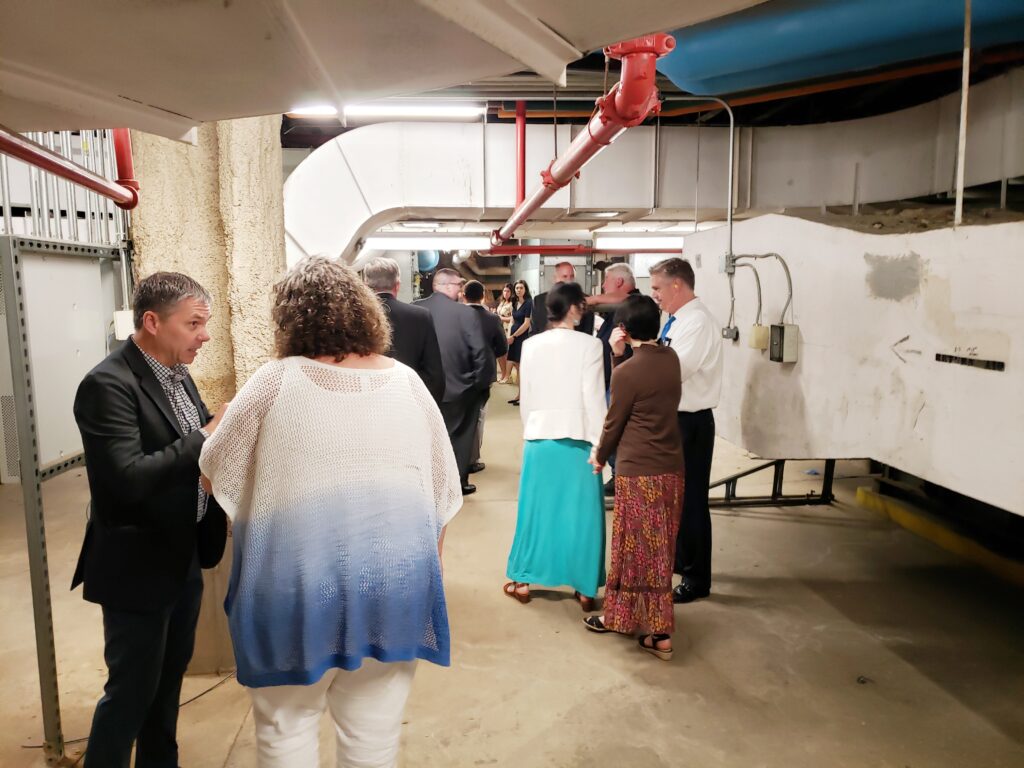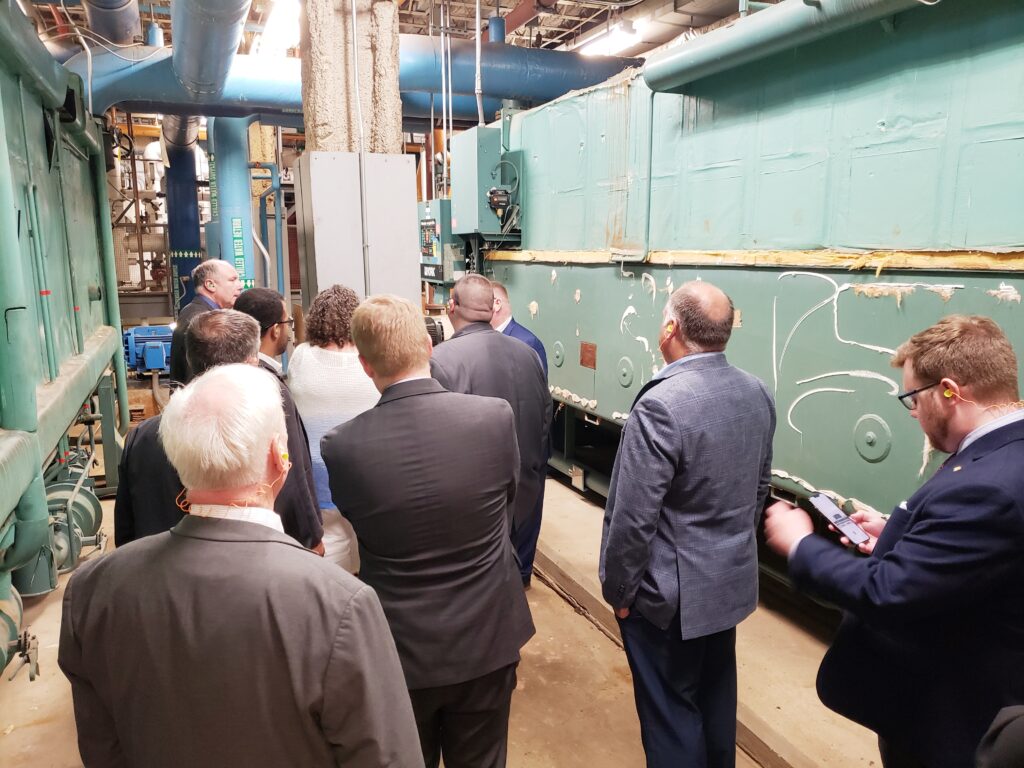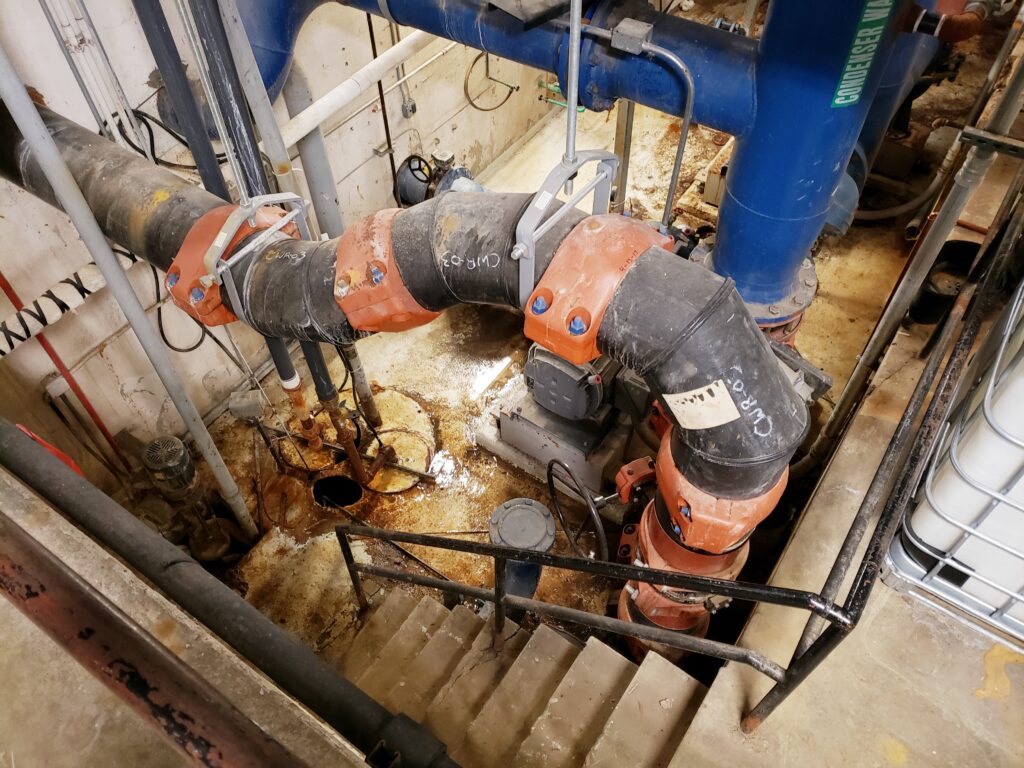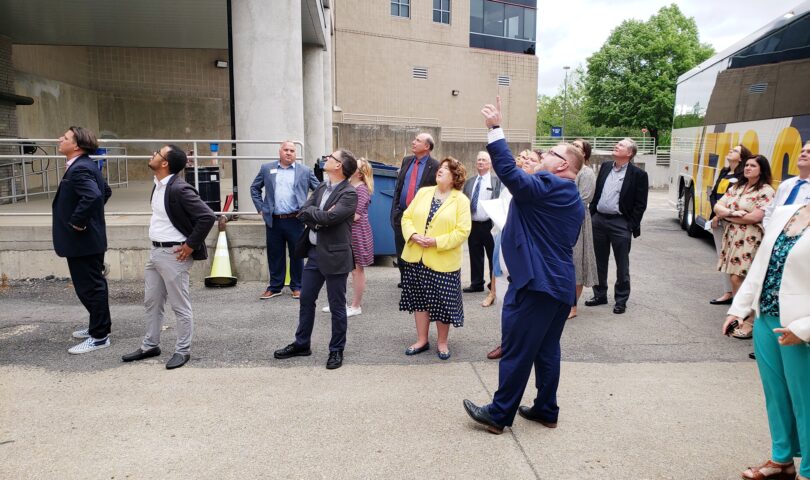MORGANTOWN – Legislators trod down into the bowels of WVU’s Engineering Sciences Building Sunday afternoon to see an example of the $664 million worth of deferred maintenance WVU needs across its campuses.
Ted Svehlik, associate vice president for Auxiliary and Business Services, led the brief tour for members of the Legislative Oversight Commission on Education Accountability. The Legislature was in town for May interim meetings.

Members, staffers and WVU staff boarded a bus for the trip from the Erickson Alumni Center across the Evansdale Residential Complex to ESB.
ESB needs $38 million in maintenance, Svehlik said. At the entrance, heads craned upward as Svehlik pointed out the bricks peeling away from the 11-story building, and brick patches where holes have been filled in.
Inside, the red fire suppression system pump needs to be replaced at an estimated cost of $250,000. In the basement, rust and water seeping in from outside are evident in the air handling unit section and the absorption chiller area where the building is cooled.
And just outside, the ESB pedestrian bridge shows rust all across its side and concrete falling away.

Rob Alsop, WVU vice president for Strategic Initiatives, presented the big picture. That $664 million represents a decade’s worth of work across all WVU campuses covering 15,880 acres and more than 518 buildings. About $92 million worth of deferred maintenance could begin immediately.
“We are good stewards and take care of our facilities,” he said. “We do not have the resources to take care of all of our maintenance.” Since 2012, they’ve taken on some debt to address some of the deferred maintenance.
During the bus trip, Svehlik pointed out other maintenance issues. The Evansdale Residential Complex is home to Lincoln Hall and the three Towers buildings and needs $66 million worth of work, he said. The complex houses 1,700 students and has had no renovations since 1968.

He pointed to the smooth black parking lots with bright yellow lines as an example of the preventive maintenance WVU undertakes. The lots are sealed every three years and new lines are painted on.
Two- and four-year institutions across the state face deferred maintenance challenges, Alsop said.
WVU’s hope is that as the Legislature looks at its budgets and higher education needs, they might consider ways to fund these needs, including one-time moneys as they become available.
“They’re not always the most sexy of issues,” he said, but it would be money well spent to serve WVU’s mission.
Tweet David Beard @dbeardtdp Email dbeard@dominionpost.com




